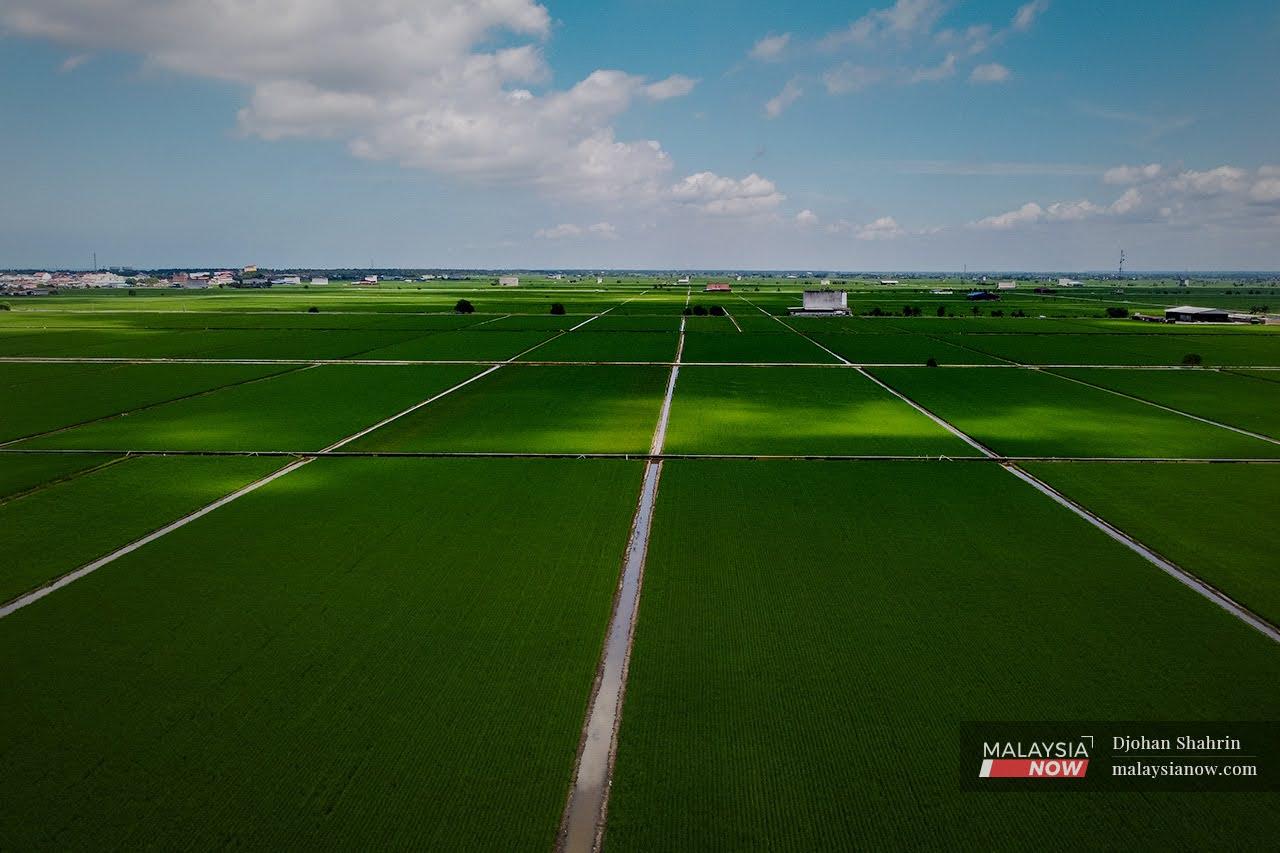Failure to develop padi industry, land policy ‘bias’ behind Malaysia’s food security concerns
Experts say obstacles remain to achieving self-sufficiency, caused in part by a lack of downstream activities and a heightened focus on industrial crops.
Just In
While Malaysia was recently ranked second in Southeast Asia after Singapore in terms of food security, experts caution that structural issues related to the matter continue to hamper the country.
Speaking to MalaysiaNow, they said the issues are primarily related to the padi and rice sector, citing the dismal levels of padi output despite the huge budget allocation for the agriculture ministry from 2015 to 2017.
Fatimah Mohamed Arshad, former director of the Institute of Agricultural and Food Policy Studies at Universiti Putra Malaysia, said while the budget for agriculture had increased four-fold, padi output showed no progress.
In 2008, she said, Malaysia’s padi output was 3.72 tonne per hectare. In 2019, this dropped 5% to 3.5 tonnes per hectare.
“There is no extensive downstream industry based on padi and rice except bran for livestock and ‘bihun’,” she told MalaysiaNow.
“This lowers the value of padi because there is no potential for it to be used as a high-value product.”
Adding that a lack of downstream activities hamper the industry, she said padi resources in the country are not fully utilised.
“Other countries such as Japan and Thailand have many additional products based on padi and rice,” she said.
Fatimah said another concern is the use of land, as agricultural land is being converted into development spots for projects such as housing.
She also spoke of a policy bias towards industrial crops at the expense of food production. For example, she said, palm oil occupies the lion’s share in terms of land use, while plots for rubber and cocoa have shrunk over the years.
In 2020, the share of agricultural land use for oil palm stood at 73% while food crops occupied only 10%.
“The era of industrial crop success depends only on palm oil,” she said.
“The estate model is only practised in the palm oil industry. It’s time that Malaysia switches to its natural riches, which is food.”
Malaysia’s position on the Global Food Security Index (GFSI) recently dropped from 28th to 43rd among 113 countries.
However, Agriculture and Food Industries Minister Ronald Kiandee told the Dewan Rakyat that the drop was due to a score adjustment by the Economist Intelligence Unit which had also caused a change in position for Singapore and Australia.
Singapore fell from first place to 20th while Australia dropped from 12th to 26th.
The issue of food security was also debated in Parliament last month, while former prime minister Dr Mahathir Mohamad also brought up the subject in his remarks on the 12th Malaysia Plan.
Nurfitri Amir Muhammad, coordinator of the Malaysian Food Sovereignty Forum, said the government should not look at the GFSI alone, adding that the self-sufficiency level or SSL is also important.
He said the GFSI also takes into account other indicators such as GDP, which was partly why Singapore had previously occupied the top spot.
But the index alone did not mean that the republic would be able to withstand a supply disruption, he added.
“The GFSI does not differentiate between the food that is produced locally and imported food. What we must look at is the ability of a country to produce its own food (through SSL),” he said, adding that the GFSI could be used to measure food management levels.
Nurfitri said the government would also have to take into account the monopoly of agricultural input in terms of seed, fertiliser, pesticides and machines, as well as rising costs and the problem of middlemen helping themselves to a large margin of profit in the industry.
“We need to liberalise the agricultural input so that there will be competition, and subsidies need to be given directly to farmers, not to vendors,” he said.
Malaysia imported RM55 billion worth of food last year including grains, coffee, cocoa, spices, dairy products and food for livestock.
Chee Yoke Ling, the director of programmes of the Third World Network, said the Covid-19 pandemic should serve as a warning for the country to reduce its dependency on imported food.
“We import almost all of our essential food, which means that when the exporting countries are hit by natural disasters such typhoons, earthquakes or drought, they cannot supply what we need.
“Pandemics such as Covid-19 are also a warning that food trade can be disrupted, and food production in the exporting countries will definitely be impacted, too,” she said.
Chee said rural communities meanwhile have more resilience and security when it comes to food supply.
She suggested that the government encourage wide-range ecological farming in order to boost local food production.
“A growing number are younger people and professionals who have gone into farming using organic or permaculture methods. These practitioners are also reviving a lot of traditional varieties of seeds, trees and herbs.
“There is also a growing interest in urban or home-grown vegetables, herbs and fruit, especially during Covid-19. These are very good trends and should be encouraged and supported by government policies.”
Subscribe to our newsletter
To be updated with all the latest news and analyses daily.
